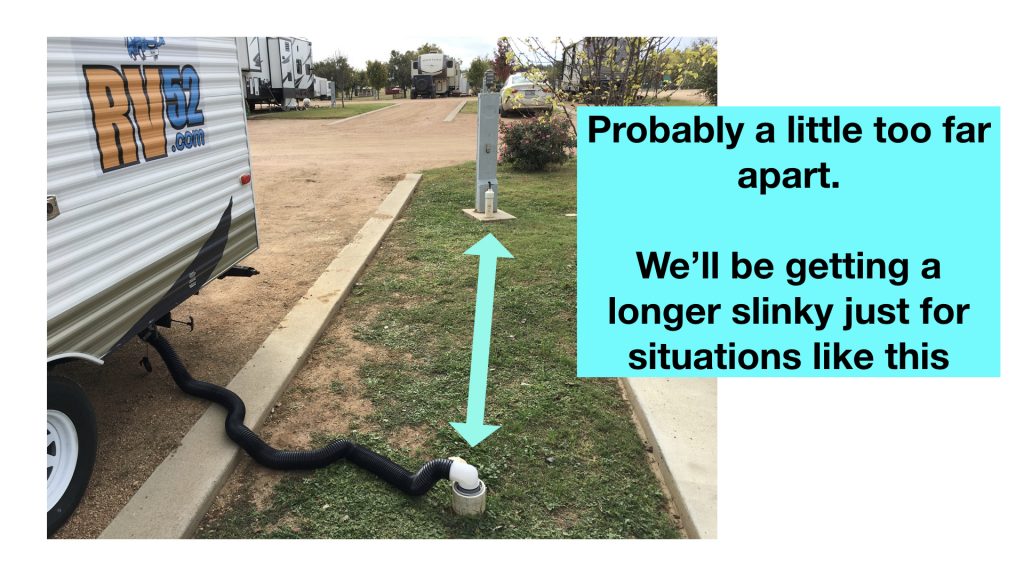
Sheri and encountered this while traveling with the Tiny Texas Tumbleweed recently.
We had to make a choice. Water & Electric *OR* holding tanks.
We chose water and electric since we were only camping for the weekend.
But if you are building a new park or remodeling an older park, you might consider NOT getting the sewer/septic connection too far from the rest of the connections.
I know some “well meaning” government code enforcement person has some ideas, but have a 12 foot stinky slinky and a water hose on hand – a reasonable length one – and show him that if they are too far apart you can’t get an RV hooked up without long runs of one or the other.
It is also helpful to have an engineer ready for the meeting with the code people as I’ve found that the engineers can make a quantum difference.
As for Sheri and I, we’ll get an emergency length stinky slinky just for parks which have made the runs way too long for smaller RVs.
Mark Laffin says
Not sure I see a problem that will be solved by campground owners. We’ve encountered all sorts of odd placements of power, water and sewer hookups, including hookups on the curb side of the rig instead of the street side. The placement of utility hookups appear to be pretty random but, i’m sure there was some logic or regulation involved when they were designed and installed. We carry 2 25-foot electrical power cords, 2 25-foot potable water hoses, and 3 10-foot lengths of sewer hose. We’ve had to use combinations of these things in nearly every site, as all sites are different. Recommend that even small RVs carry extra utility cords and hoses so hookups can be made.
Marlan at Rv52 says
Thx Mark. I at least want someone doing a new park to just think about it. I’m not sure people do sometimes. Our 40 foot Open Range would not have had a problem since it had a more forward located black tank, but on our little 16 footer, I get to discover new surprises. I had the power extension, but not the water or slinky. Awesome advice you’ve provided.